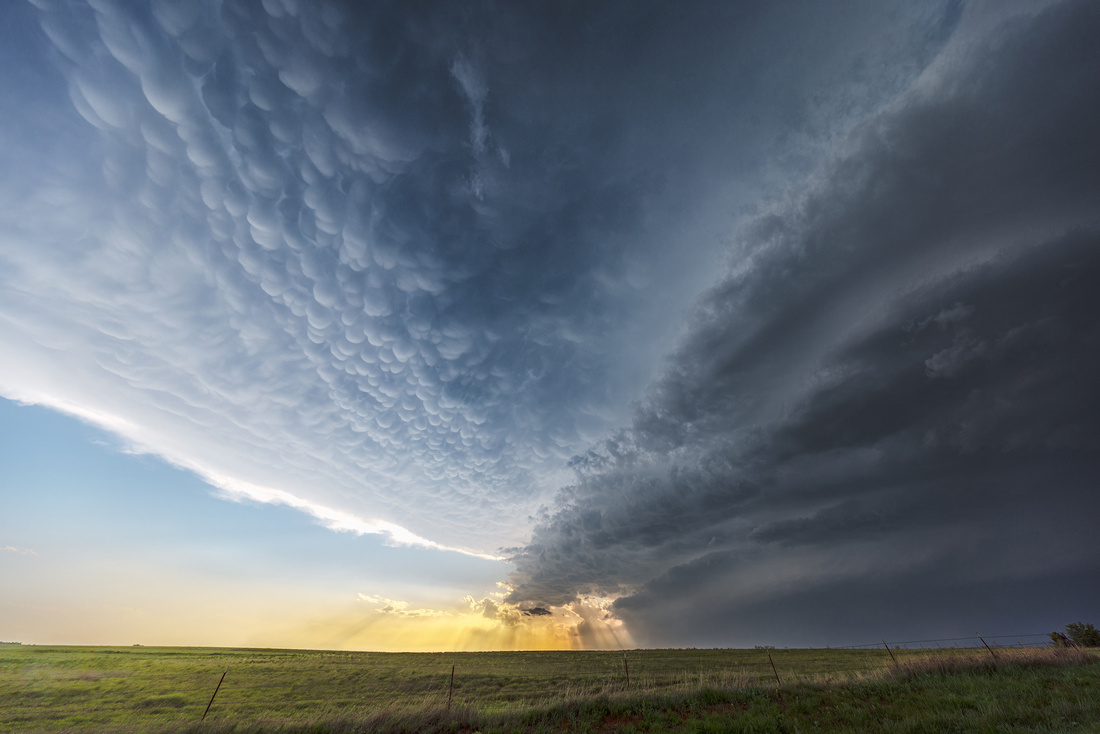"Udderly" Striking


No, it’s not a typo. This title is for my good friend and fellow punster since seventh grade, Mark Hendrickson.
Look at the prominent pouch-like clouds on the left underneath the anvil cloud. Those are mammatus.
Most clouds form in rising air. But not mammatus clouds. They are a rare example of upside-down clouds formed by sinking air.
Mammatus clouds require three ingredients. The first is that the sinking air must be cooler than the air around it. The second is that the sinking air has a high liquid water or ice content. The third is the presence of dry air beneath the moist air.
As the cooler, water/ice-rich air sinks, bag-like cloud sacs form that resemble cows’ udders. The name comes from the Latin mamma meaning udder. Although mammatus most frequently form on the underside of a cumulonimbus cloud, they can develop underneath cirrocumulus, altostratus, altocumulus, and stratocumulus.
Mammatus clouds last longer if the sinking air contains large water drops or large snow crystals. The larger the particle, the more energy and time it takes for evaporation to occur. But the cloud droplets eventually evaporate and the mammatus clouds dissipate.
Mammatus clouds are most often associated with anvil clouds and severe thunderstorms. While they look scary, they are not a warning sign of an impending tornado.
The Shot
On May 19, our storm chasing tour was positioned near Arnett, Oklahoma. The leader picked this supercell as having tornadic potential. But it was a high precipitation supercell that hid any tornadoes inside a torrential downpour.
During our several hour chase, we noticed crepuscular rays (sun beams or God rays) in the distance. We had to stop for photos because an interesting atmosphere is irresistible to photographers.
All we had for a foreground was a barbed wire fence. You’re probably thinking “Couldn’t Chuck find a more interesting foreground?” Please feel free to visit rural Oklahoma and discover a more interesting foreground for my next photo there. 😊
I was struck by the combination of beautiful mammatus above, sun beams in the distance, and the dichotomy between the ominous, dark supercell on the right and the sun peeking out on the left.
We all took a moment from our photography to simply admire the view. The quotation from Cheryl Strayed in her book Wild came to mind. “There’s always a sunrise and always a sunset and it’s up to you to choose to be there for it… Put yourself in the way of beauty.”
Thanks for looking,
Chuck Derus